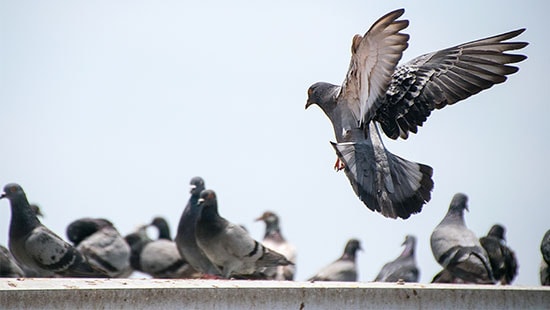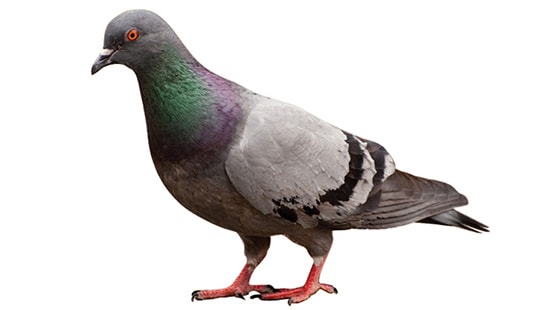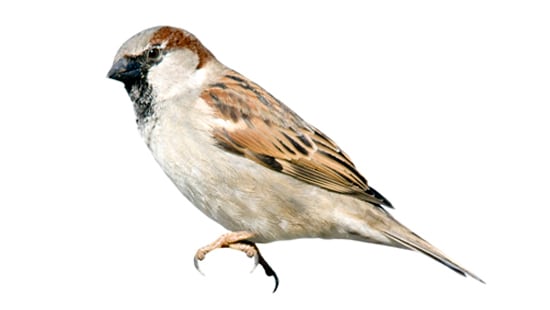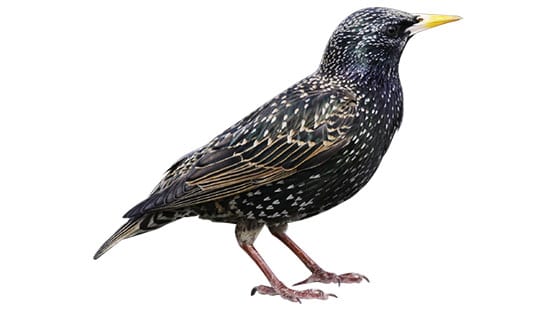Pest of the Quarter: Birds
The Pest Monitor Newsletter

Birds in the wild can be a source of pleasure for many, but in food processing facilities, they are considered by the Food and Drug Administration (FDA) to be a Category I pest. As described in FDA’s Pest Control in Food Establishments Course, designed to provide inspectors and food establishments with basic information on pests and their control, Category I pests are the most serious because they can transmit diseases to food and cause allergic reactions.
European starlings, English sparrows, and feral pigeons are cited by FDA as responsible for the majority of bird problems at food establishments, and of concern because of the filth they can spread. FDA defines filth as “any contaminant that, because of its repulsiveness, would not normally be eaten. Filth may or may not be an actual health hazard; its mere presence in a product will render that product adulterated.”
Additionally, birds are a problem because:
- They may carry foodborne pathogens. They are reported to harbor over 60 diseases, including encephalitis, salmonella, meningitis, toxoplasmosis, West Nile virus, and many others.
- Bird droppings can harbor parasites and spread diseases such as histoplasmosis and their accumulations produces flies, airborne contaminants, fungus spores, and odors.
- Not only are the droppings acidic and able to ruin structures and equipment, they can be easily tracked indoors where they can become airborne or foot-borne contaminants.
- Can be a slip hazard
- The birds, themselves, can gain access to food and storage areas through doors, windows, and ventilators.
- Their nests can block gutters, drains and other conduits, and provide harborage for insect pests that live on and around birds, leading to secondary infestations.
- Their presence may be an indicator of insanitation in the facility or lack of adequate pest exclusion.
- The pest birds breed at a rapid average rate of two to four offspring per year, making control more difficult and costly the longer they are left to roost and breed.
Bird control requires a partnership between the food facility and pest elimination service specialist. Like other pests, birds can be attracted to the plant because of the perceived abundance of food, so it is important that the food facility limit that attraction as much as possible:
- Do not allow any feeding of birds anywhere on the property, and ensure outdoor break areas are kept clean and free of food scraps.
- Keep doors tightly closed, use air doors or curtains where needed.
- Inform employees to record signs of bird presence in/on the building in the pest sighting logbook. Signs may include activity, feathers, nests/nesting material, eggs, droppings, and regurgitated pellets of undigestible matter.
Your service specialist has a variety of non-lethal control methods to help deter birds and keep them from roosting and breeding in and on your buildings. These can include:
- Netting. A high-grade polyethylene mesh which is virtually undetectable from ground level. Can be used externally or indoors to keep birds out of rafters.
- Spiked, spring-wire, or electric-track systems. Designed for installation on ledges and other roosting points, the systems harmlessly prevent birds from roosting.
- Optical gels. Birds are deterred from landing when they see the treated area.
- Live Trapping. The discreet use of strategically sited cage traps enables the humane removal and re-siting of unwanted birds over a period of weeks.
- Fouling Removal. This multi-stage operation ensures that fouling is removed safely and hygienically to eliminate contamination risks and protect building structures.
- Flock Stress methods to make birds migrate away from areas that are treated.
Birds can cause significant contamination and fouling, and as an FDA Category 1 pest, they can be a source of regulatory non-compliance, fines, and/or closure. However, because most birds are considered to be protected species, food facilities should seek the services of a knowledge pest elimination service specialist for control.
Which Birds Are You Battling?
The three pest birds that cause the most damage at food facilities are not protected by federal or state law:

Pigeon

English (House) Sparrow


